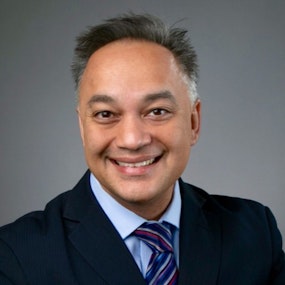ROBERT JOHNSON:
This is Public Health Review Morning Edition for Thursday, September 9th, 2021. I'm Robert Johnson.
Here's today's news from the Association of State and Territorial Health Officials.
Preparedness is on the minds of many this week, the nation planning to remember 9/11 on Saturday even as ASTHO members respond to a growing number of COVID-19 infections, flooding, and wildfires.
When these emergencies overwhelm local responders, states and territories lean on the Emergency Management Assistance Compact, or EMAC, for help from neighbors.
Win Rawls is ASTHO's director of preparedness and evaluation. He talks about the increasing need for interstate emergency help in today's morning conversation.
So, what is going on with EMAC right now? It seems like there are just so many disasters and emergencies happening all over the country. Is the volume of requests increasing on the EMAC system?
WIN RAWLS:
It's fair to say that it is.
We started out with the COVID response and, as you know, we've been into response now for 18 plus months.
So, we saw a lot of requests for EMAC assistance during the COVID response, and that's been exacerbated by now Hurricane Ida and also the wildfires out north and the northwest corner states.
JOHNSON:
What do states need to know about the volume of EMAC requests coming into the system at this point?
RAWLS:
I think just the fact that they need to know that there's quite a few of them and they need to pack a little patience with it.
But make sure their request has been detailed out, that's going to help; so, if there's resources available from another state, they can be quickly identified and provided.
The thing to know now is that every state is stretched, again, with the COVID response and this most recent surge; and then, again, compounded by Hurricane Ida and the wildfires.
So, again, just a lot of resources being requested and every state, quite frankly, is in the same boat in terms of a lack of resource.
JOHNSON:
So, it's taking more time right now for requests to be fulfilled.
RAWLS:
It is, yes, taking a longer time if those requests can be filled.
But again, if they detail out those requests, talk with their emergency management, state emergency management, and ensure that everything is provided first time around, they have a better chance of getting those resources request filled.
JOHNSON:
Given all of the emergencies that we are facing across the country, what's the outlook for the level of request heading into the fall?
Are we expecting more?
RAWLS:
I think it's fair to say that we might expect more.
Again, the resurgence in COVID, as you know, we're in the middle of the hurricane season that runs basically from August till October, and now again, with the wildfires on the west coast—we don't expect to see any relief in the next few weeks, anyway.
But again, if they get those requests in early, they have a better chance of getting them filled.
JOHNSON:
Let's talk about filling the request quickly.
How can states prepare to help if they've got resources that might be available that they don't need themselves at this moment?
RAWLS:
I think that's where the states have to work with each other in detailing out those requests determining what's available within their state and their jurisdiction and what can be provided to other states.
And again, if they go through that in a detailed manner and talk mutual aid-to-mutual aid, state-to-state, sometimes they can share resources.
But if not, it gets into the EMAC request and then they have a better chance of getting that resource filled.
JOHNSON:
Is ASTHO available to help states if they have questions or are concerned about some aspect of this system?
RAWLS:
Absolutely.
We can provide technical assistance and help work through state emergency management and work with NEMA; and typically what we will do is work on the NEMA side of things, and they will reach out to the states and provide assistance and help those states get those requests filled.
JOHNSON:
Messaging is critical during a crisis because of its ability to inspire or incite audiences.
Dr. Umair Shah is secretary of health for Washington state.
- UMAIR SHAH:
So then, when I'm at a podium talking, or I'm doing some sort of interview, I don't come at it just as a physician or I don't come at it just as a public health professional—I don't come at it just as anything.
But I come at it as part of the community.
JOHNSON:
Dr. Shah examines the value of crisis communication in a new episode of the Public Health Review podcast coming your way later this month.
Also this morning, ASTHO members are taking bold action to address the suicide crisis in the U.S. among those suffering, kids ages 12 to 17. A recent CDC report says mental health visits for young people are up 31% compared to the previous year.
ASTHO's Maggie Davis and Robin Matthies teamed up to write an article on the topic, looking at risk factors and the way states and territories have responded. We'll hear more from Robin about this on Friday.
And don't forget, ASTHO'S forum exploring preparedness lessons two decades after 9/11 is this afternoon. The virtual program kicks off at 1:00 PM Eastern time today. There's still time to register for this free event.
The link is in the show notes, along with links to everything mentioned in today's report.
Also remember to follow us on Apple Podcasts and Spotify, or listen on Alexa or Google assistant. And, if you have a minute, please take time to leave us a rating and a review.
Join us tomorrow morning for more ASTHO news and information.
I'm Robert Johnson. You are listening to Public Health Review Morning Edition.





